
Woodcock have a reputation of being unpredictable in their movements, here today and gone tomorrow.
So you could be forgiven for feeling that whether or not you shoot them makes little difference to numbers in the long-term. To the Victorian sportsman, a ‘fall’ was not to be missed. If the keeper found some, he would rush to tell the boss and invitations to shoot tomorrow would be sent out in a hurry.
The first clues that this story of randomness might not quite right come surprisingly early. I remember reading an account of an odd-coloured bird trapped by an early Victorian gamekeeper on the Gower Peninsula in South Wales and taken to his boss.
In an early example of bird ringing, the boss put a band of metal around the bird’s leg and had it released where caught. It was shot in the same spot a year later. Bearing in mind that back then woodcock hardly bred in the UK, this was a first clue to the site fidelity of migrating birds that we have begun to understand in detail over the past two decades.
Population trends
Since those days, we have planted lots of woodland in the UK and it is perhaps unsurprising that the woodcock have responded. Everyone knows about the large-scale afforestation of the 20th century, but it is very likely that the early growth in the home-breeding population, which was documented by the Victorians, was helped by the planting of game coverts as pheasant shooting took off.
So whatever you may have heard about woodcock declining should be set against this. Our home-breeding population probably peaked in the 1970s, though even then they would have been scarce in the western extremities. The great woodcock shooting counties of Cornwall and Pembrokeshire probably never produced any home-bred birds.
This story is from the {{IssueName}} edition of {{MagazineName}}.
Start your 7-day Magzter GOLD free trial to access thousands of curated premium stories, and 9,000+ magazines and newspapers.
Already a subscriber ? Sign In
This story is from the {{IssueName}} edition of {{MagazineName}}.
Start your 7-day Magzter GOLD free trial to access thousands of curated premium stories, and 9,000+ magazines and newspapers.
Already a subscriber? Sign In
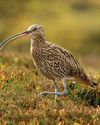
United we stand
Following United Utilities' decision to end grouse shooting on its land, Lindsay Waddell asks what will happen if we ignore our vital moors

Serious matters
An old gamebook prompts a contemplation on punt-gunning

They're not always as easy as they seem
While coneys of the furry variety don't pose a problem for Blue Zulu, he's left frustrated once again by bolting bunnies of the clay sort

Debutant gundogs
There's lots to think about when it comes to making the decision about when to introduce your dog to shooting
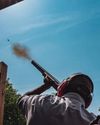
When the going gets rough
Al Gabriel returns to the West London Shooting School to brush up on his rough shooting technique

The Field Guide To British Deer - BDS 60th Anniversary Edition
In this excerpt from the 60th anniversary edition of the BDS's Field Guide To British Deer, Charles Smith-Jones considers the noise they make
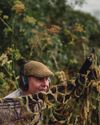
A step too far?
Simon Garnham wonders whether a new dog, a new gun and two different fields in need of protection might have been asking too much for one afternoon's work
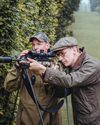
Two bucks before breakfast
A journey from old South London to rural Hertfordshire to stalk muntjac suggests that the two aren't as far detached as they might seem
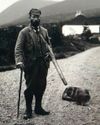
Stalking Diary
Stalkers can be a sentimental bunch, and they often carry a huge attachment to their hill

Gamekeeper
Alan Edwards believes unique, private experiences can help keepers become more competent and passionate custodians of the countryside